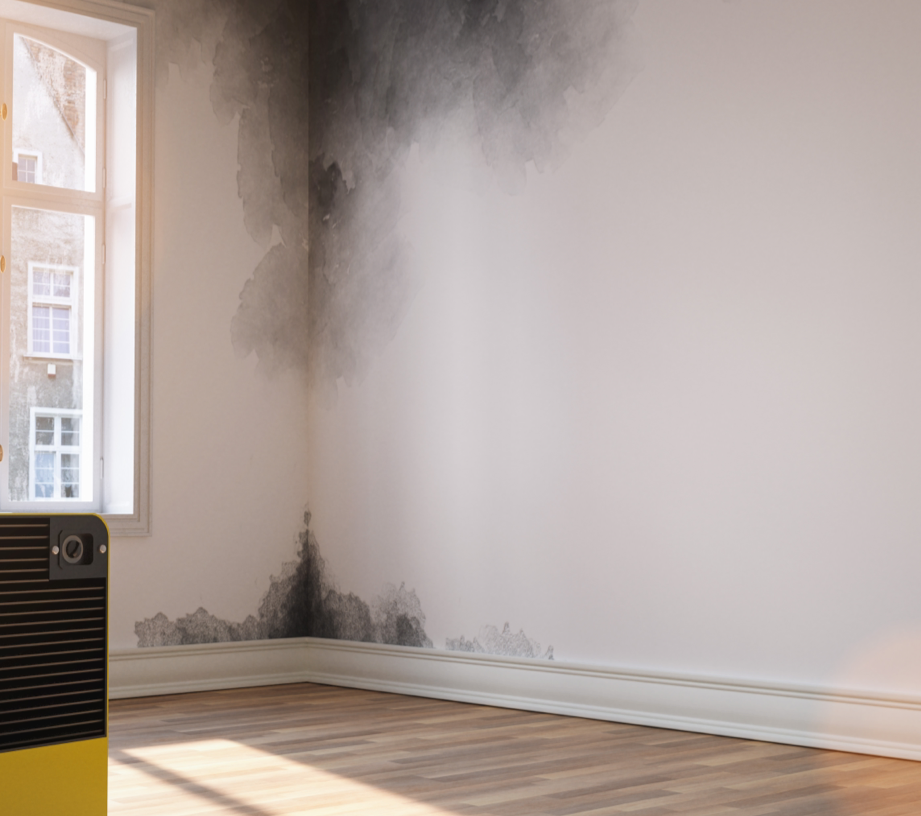Damp, Mould & Condensation
On this page, you’ll find more information about damp, mould and condensation. You can also report a damp and mould problem here too.
If you are experiencing damp and mould, please complete our online form (at the bottom of this page) to report this. We take cases of damp and mould very seriously and wish to do everything possible to resolve the issue.
What are the types of damp?
Check out the tabs below to learn more about the signs of each and what they look like.
What is mould?
Mould is usually produced in damp and humid conditions, and it’s common to notice mould growing in our homes as they offer moisture and warm air, as well as materials to feed on, such as carpet and wallpaper. Things like damp and condensation can help mould to grow, so it’s important to try and prevent these things first.

Top tips to prevent and remove condensation
- Open windows for 10/15 minutes every day, even in winter, to allow a draft into each room.
- Use lids on pans when cooking, open windows, and close doors to stop moisture spreading. Use an extractor fan.
- Keep your bathroom door closed when showering and bathing. Use an extractor fan.
- If you’re drying clothes inside, try to do this in one room, closing the door of that room, and opening a window. Drying clothes outside is the best way to keep moisture out of your home, if you have access.
- Try to keep furniture away from walls where possible, to allow heat to travel properly around the room.
- Keep your home warm, setting your thermostat between 18-21 degrees.
- Wipe off condensation on windows and frames throughout the day when needed.
Find out more about damp, mould and condensation in this video by the Association of Safety and Compliance Professionals, which we are proud to be a member of.
Find more help and support below:
If your extractor fan is broken, it’s important you report it to us and we will arrange for it to be repaired. If you do not have a fan, let us know and we will investigate if one can be installed. Many of our properties have fans installed in the kitchen and bathroom. There are a small number of properties due to their design and layout where its physically impossible to install a fan.
Initial report
We will assess the severity of the damp and mould and the impact it is having on you and other household members. It’s worth knowing that our response times will be based on the severity rating.
Reoccurring issues
A dedicated member of staff will review all our records relating to repairs and work with you to identify the cause of the repeat issue. We may need to complete an inspection or complete in-depth investigations to ascertain the cause, this can at times cause a slight delay to arranging the necessary repairs.
No access
We take cases of damp and mould very seriously and wish to do everything possible to resolve the cause. We will always aim to pre-arrange an appointment to visit you, but we know at times, you may not be available. When this occurs, please contact us straight away to rebook the appointment. If we do not hear from you, we will contact you.
We will always ensure that we gain access to your home to fulfil the purpose of the visit, weather that is to inspect or repair your home. If we experienced continued issues with accessing your home, our Tenancy Services Team will get in touch to discuss the reasons why and work with you until we are confident the damp and mould has been resolved.
Repairs
Your repair may be completed either by a member of the Ongo Maintenance Team or a contractor working on our behalf. At the time of ordering your repair, we will inform you of this.
If we are to complete your repair, an appointment will be made and confirmed with you. Contractors will contact you directly to arrange an appointment.
During the winter months, we see a rise in reports of damp & mould, and our response times may be longer than normal. We will always strive to achieve the timescales and please bear with us during busy periods.
Post repair
We will send you a survey to gather your thoughts and to check the damp and mould has been resolved. If you are not satisfied, a member of our Customer Experience team will contact you to discuss and organise any further repairs that are required. We will also contact you again after two months to check all’s okay. However, please do not wait for these surveys if the damp and mould reappears; please contact us again.
We are responsible for repairing any property defect that is causing the damp and mould. If the cause of mould growth is condensation, we are here to help you minimise the causes of condensation. We may, as part of diagnosing the cause of the damp and mould or during the completion of a repair, arrange for someone to visit you to discuss the condensation.
Alternatively, if you’d like further help or support, please contact us.
It’s very important to us that we know if you are unhappy about our services relating to the report damp, mould & condensation process. Please contact us to make us aware as we use complaints to identify when and where we need to make improvements. Find out more on our complaints page.
Click here to take a look at our healthy home handbook.